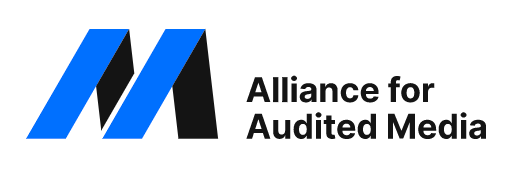“The Sell Sider” is a column written by the sell side of the digital media community.
Some publishers deserve ad dollars and some don’t – and this has been true since long before the internet was a twinkle in anyone’s eye.
The Alliance for Audited Media (AAM) was founded in 1914 by the Association of National Advertisers to verify and authenticate the circulation figures of print publishers. In the mid-1990s, AAM expanded its audits to include digital publishers.
A typical audit, which is voluntary, involves a detailed business review so AAM can understand exactly how a publisher monetizes their ad space. AAM also tags websites to establish industry benchmarks and check the numbers against the publisher’s web analytics.
“Once we have a degree of confidence that their site is tagged correctly, we look for evidence of any invalid activity,” said Steve Guenther, the AAM’s VP of digital auditing services.
Guenther and his team examine traffic sources and fraud vendor reports and make note of discrepancies or suspicious activity. The process typically takes between three and six months.
After the initial onboarding, the AAM runs monthly tests for ongoing analysis of traffic quality and quantity.
“The best way to think of it is as a continuous audit, an audit in perpetuity,” Guenther said. “And if we see a significant deviation, we’re there to investigate.”
Guenther spoke with AdExchanger.
AdExchanger: How is the Alliance for Audited Media different from an entity like the Media Rating Council?
STEVE GUENTHER: We’re similar in that we both provide audit services that give assurance to advertisers when they’re buying media. But whereas the MRC primarily audits the measurement providers, we audit the publishers themselves.
We also conduct all of the audits ourselves, whereas MRC audits are conducted by CPA firms.
What are you looking for when you audit digital publishers?
We focus on traffic quality to make sure the traffic they generate isn’t fraudulent or invalid using the MRC’s invalid traffic (IVT) guidelines. Publishers raise their hand to undergo these audits because they want to demonstrate to advertisers that they’ll be good stewards of their ad dollars. If we find any evidence of IVT, we flag it for review and follow up with the publisher.
We look at information from the publisher’s web analytics system, but also put a tracking tag on each page of the publisher’s site. It’s important that we get an independent data set to analyze.
It’s similar to how ad fraud detection companies work, but we’re looking at traffic quality from the publisher’s perspective.
What are the main sources of IVT?
Publishers that don’t buy traffic don’t usually have a problem, but even what you might call “good” or scrupulous publishers do have some IVT. On one end of the spectrum you have something like domain spoofing and on the other you have search companies scouring the internet with their bots to create indexes.
Publishers need policies and procedures in place to account for that in any reporting they give back to advertisers.
What makes a “good” publisher good?
Audits start from the top down. We ask questions like, is the publisher considered reputable? Have they been around and developed a certain level of trust in the marketplace?
As an audit evolves, we look for consistency in their traffic, which indicates that they’re following good practices and accounting for the activity on their site. Sudden spikes in traffic, for example, can be a red flag, but they can also occur when certain news stories drive traffic. That’s why you have to look at a publisher holistically and evaluate traffic using multiple inputs.
But we actually don’t see a lot of the dodginess that happens across the web because we don’t have insight into traffic coming from publishers that don’t raise their hand to be audited.
But even so, are publishers ever surprised by what you find?
I’m sure some are. A lot of the publishers we work with have limited resources, so the folks they employ might not know how to set all of the trafficking code correctly. For example, they might be multi-tagging their site and double counting their traffic accidentally. A lot of what we see are just traditional accounting issues.
Is the industry overall getting better at catching and mitigating ad fraud, IVT and other related issues?
That’s hard for me to answer, because we’re generally auditing good publishers. But these are still problems for the industry and I do think one of the reasons is because advertisers aren’t demanding third-party audits.
But it’s not like we’re the entire solution. We’re only part of it. There needs to be a framework that connects multiple solutions together. We call that the “Swiss cheese model.” The industry needs ad fraud detection vendors, the MRC, TAG, our publisher audits and technical standards from the IAB Tech Lab.
No one thing is the silver bullet, but if you think of each of these as a slice of Swiss cheese and you stack the slices one on top of the other to cover the holes, you end up with better protection overall.
How should buyers work with long-tail publishers?
Buyers need to take a risk-based approach to their media buying. It’s not our job to tell them how much risk they should be willing to accept, but rather to help them identify what the risks are.
An audited publisher represents less of a risk to a buyer’s campaign. That’s not to say non-audited publishers are bad, but it’s something that advertisers with a higher sensitivity to risk need to consider.
How do scandals like what happened with Ozy Media last year affect legitimate publishers?
The positive spin is that it gets the buyer’s attention and demonstrates that this stuff is happening and that the best recourse is always to work with publishers who hold themselves to a higher standard.
It’s clear evidence that if advertisers care about quality they need to partner with publishers that also care about quality.
This interview has been edited and condensed.
For more articles featuring Steve Guenther, click here.

















